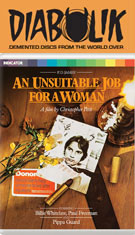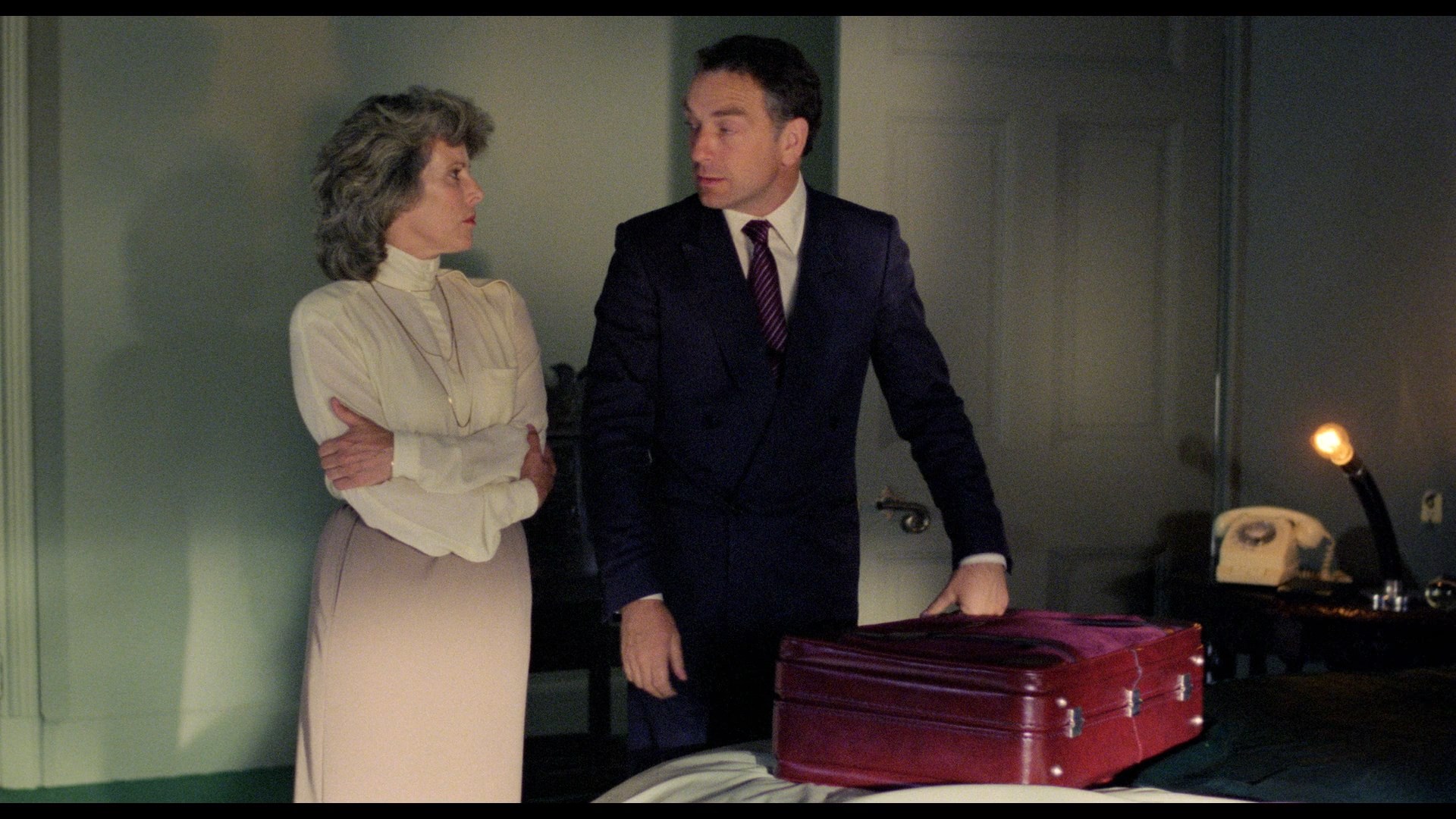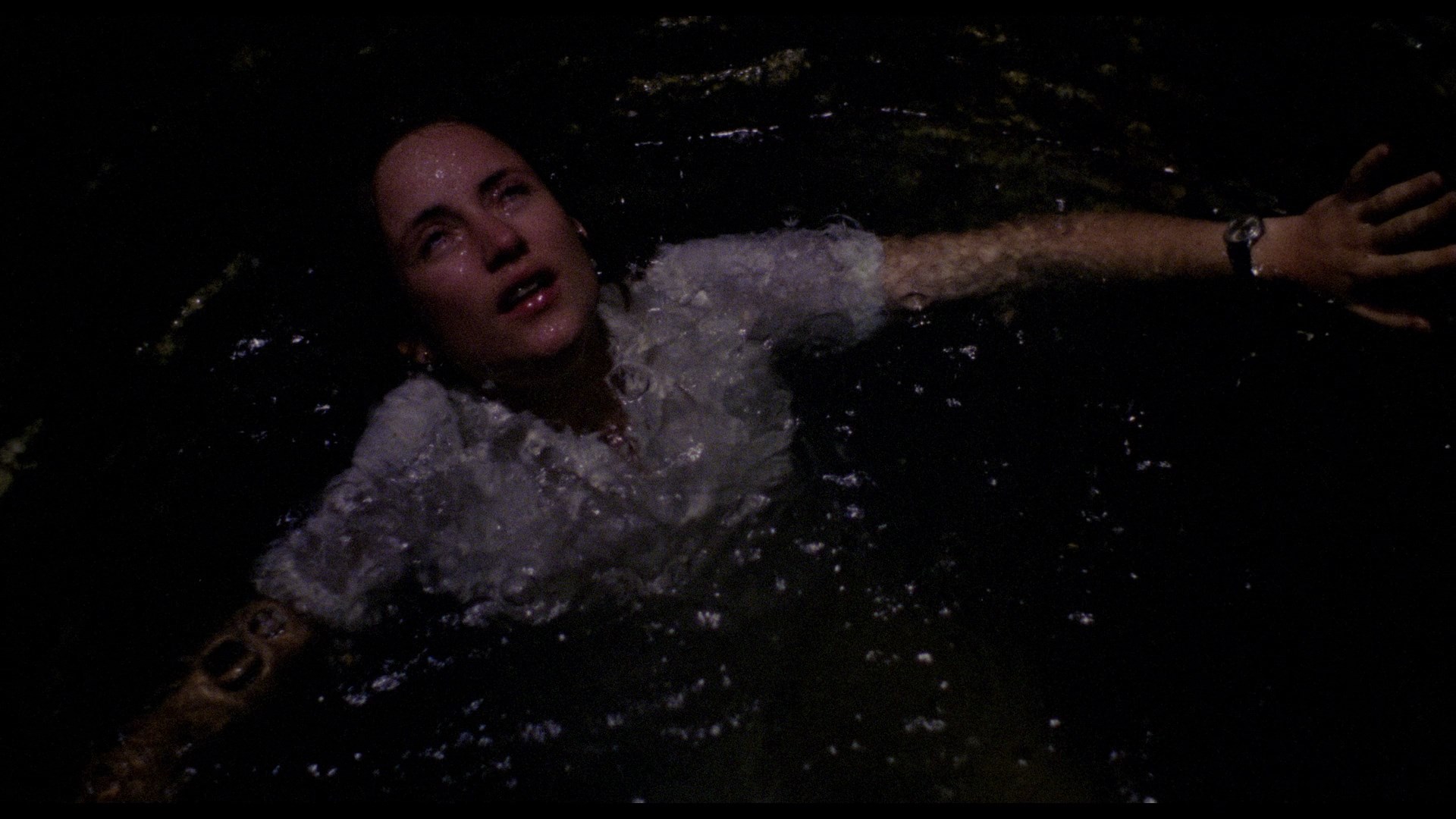



 UK-based riff on the German New Wave with his music-packed debut feature Radio On, director and
UK-based riff on the German New Wave with his music-packed debut feature Radio On, director and  onetime film critic Chris Petit decided to shift gears and go for a more mainstream murder mystery project. After contemplating adapting Patricia Highsmith or Agatha Christie, he ended up choosing An Unsuitable Job for a Woman, based on the 1972 novel by P.D. James (later adapted again twice for television in 1997 and 2001). Though her books have been mainstays of British TV for decades, James has been oddly underrepresented on the big screen consisting of only this film and Alfonso Cuarón's Children of Men. Petit's attempt was an odd duck at the time, too gritty and unfaithful to its source to please mystery buffs but not offbeat enough to appeal to the alternative cinema crowd. Today in the wake of many "dark revisionist" takes on Agatha Christie in recent years, it's easier to appreciate what this one was going for.
onetime film critic Chris Petit decided to shift gears and go for a more mainstream murder mystery project. After contemplating adapting Patricia Highsmith or Agatha Christie, he ended up choosing An Unsuitable Job for a Woman, based on the 1972 novel by P.D. James (later adapted again twice for television in 1997 and 2001). Though her books have been mainstays of British TV for decades, James has been oddly underrepresented on the big screen consisting of only this film and Alfonso Cuarón's Children of Men. Petit's attempt was an odd duck at the time, too gritty and unfaithful to its source to please mystery buffs but not offbeat enough to appeal to the alternative cinema crowd. Today in the wake of many "dark revisionist" takes on Agatha Christie in recent years, it's easier to appreciate what this one was going for. the circumstances behind the death, she soon finds her own life in great peril.
the circumstances behind the death, she soon finds her own life in great peril.  A subdued but sometimes effective and suspenseful thriller, this one may bend the original story in several ways but does capture the mixture of idyllic English countryside life and creeping dread that characterizes many of James' books (including the sequel she wrote with the return of Gray's character, The Skull Beneath the Skin, which came out the same year as this film). The decision to shoot the film in the obscure Gevacolor process is largely responsible for the curious atmosphere here with a thick, dark, almost unnaturally colorful appearance at times, a fascinating choice by regular Wim Wenders cinematographer Martin Schäfer. If you're expecting a standard, straightforward whodunit, that isn't quite what you get here; it is a mystery of course, but the feeling of loss and search for connection gets a much higher priority. The one area it does fall short is the rather drab first-time score by Chaz Jankel (of Ian Dury and the Blockheads), who went on to do much better work later, but that's easy to overlook.
A subdued but sometimes effective and suspenseful thriller, this one may bend the original story in several ways but does capture the mixture of idyllic English countryside life and creeping dread that characterizes many of James' books (including the sequel she wrote with the return of Gray's character, The Skull Beneath the Skin, which came out the same year as this film). The decision to shoot the film in the obscure Gevacolor process is largely responsible for the curious atmosphere here with a thick, dark, almost unnaturally colorful appearance at times, a fascinating choice by regular Wim Wenders cinematographer Martin Schäfer. If you're expecting a standard, straightforward whodunit, that isn't quite what you get here; it is a mystery of course, but the feeling of loss and search for connection gets a much higher priority. The one area it does fall short is the rather drab first-time score by Chaz Jankel (of Ian Dury and the Blockheads), who went on to do much better work later, but that's easy to overlook. cinema,
cinema,  and his desire to cast actors like Isabelle Huppert, Lesley-Anne Down, and Terence Stamp. Then in "A Bridge Too Far" (12m47s), Dominic Guard cheerfully recalls acting opposite his kin and the production process including his difficulty handling his big car scene (despite professing to not be claustrophobic). Finally in "Absolute Fascination" (31m12s), producer Don Boyd covers his interest in Petit after Radio On, his desire to make a film that would push the director, working with Goldcrest and David Puttnam to get the film set up, the casting process (including the reason Down got nixed and consideration of Frances Barber), and the tricky machinations that took place during production. Also included are the UK trailer, a VHS trailer, and two image galleries for promotional materials (28 images) and unit photography (113 images). The insert booklet comes with an in-depth new essay by Claire Monk, "Petit's Family Plot," tying this in with his prior film and parsing out the public responses at the time of its releases, as well as a Monthly Film Bulleting piece by Petit about adapting the novel, a Sight and Sound report from the set by John Pym, and three sample critical reactions.
and his desire to cast actors like Isabelle Huppert, Lesley-Anne Down, and Terence Stamp. Then in "A Bridge Too Far" (12m47s), Dominic Guard cheerfully recalls acting opposite his kin and the production process including his difficulty handling his big car scene (despite professing to not be claustrophobic). Finally in "Absolute Fascination" (31m12s), producer Don Boyd covers his interest in Petit after Radio On, his desire to make a film that would push the director, working with Goldcrest and David Puttnam to get the film set up, the casting process (including the reason Down got nixed and consideration of Frances Barber), and the tricky machinations that took place during production. Also included are the UK trailer, a VHS trailer, and two image galleries for promotional materials (28 images) and unit photography (113 images). The insert booklet comes with an in-depth new essay by Claire Monk, "Petit's Family Plot," tying this in with his prior film and parsing out the public responses at the time of its releases, as well as a Monthly Film Bulleting piece by Petit about adapting the novel, a Sight and Sound report from the set by John Pym, and three sample critical reactions. ![]()